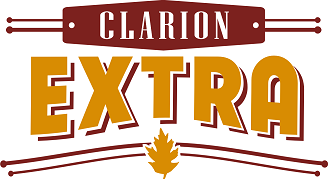HARRISBURG (AP) – Pennsylvania is becoming the 24th state to legalize a comprehensive and public medical marijuana program after Gov. Tom Wolf signs legislation Sunday. Here are major elements of the 80-page bill:
Patients
Patients must receive a certification from a physician registered with the Department of Health and have a valid identification card issued by the department that includes their name, address and date of birth. A patient must be diagnosed with one of the following 17 conditions: cancer; HIV; AIDS; ALS; Parkinson’s disease; multiple sclerosis; damage to the nervous tissue of the spinal cord with objective neurological indication of intractable spasticity; epilepsy: inflammatory bowel disease; neuropathies; Huntington’s disease; Crohn’s disease; post-traumatic stress disorder; intractable seizures; glaucoma; sickle cell anemia; autism; neuropathic pain; or severe chronic or intractable pain that is untreatable.
Use
Medical marijuana may only be dispensed as a pill, oil, tincture or liquid; in a topical form, such as a gel, cream or ointment; or in a form medically appropriate for vaporization or nebulization. Patients wouldn’t be able to legally obtain marijuana in a form they could smoke.
Growing and selling
The state would license up to 25 growers and processors, and as many as 50 dispensaries, which could each operate three locations. Dispensaries and growers could not be located within 1,000 feet of a school or day care center, although the Department of Health would be able to waive that requirement on a case-by-case basis. Growers, processors and dispensaries would have to meet local zoning laws. Patients would not be allowed to legally grow their own marijuana.
Buying
A parent or guardian may lawfully obtain medical marijuana from another state or country to be administered to a minor.
Regulation
The Department of Health would have to write regulations and monitor the growth, transportation, possession, processing, testing and sale of medical marijuana in Pennsylvania. That includes maintaining a database of all patients approved to use it and all caregivers approved to assist in its use. It will develop training courses for medical professionals; approve safety information that dispensaries must provide to patients; create an identification card system for patients and caregivers; and ensure the advertising and marketing of medical marijuana is consistent with federal regulations governing prescription drugs. Caregivers and owners and employees of growers, processors and dispensaries must submit fingerprints for a criminal record background check before getting a permit or identification card.
Tracking plants
A grower, processor or dispensary must implement an electronic inventory tracking system that is connected to a Department of Health database that electronically tracks all medical marijuana on a daily basis. The system is supposed to track the medical marijuana from seed through the sale to a dispensary and a patient or caregiver, including information from the identification card presented by the patient or caregiver. It also must include daily sales, prices paid and systems to track the recall of defective medical marijuana and plant waste.
Tax
The bill imposes a 5 percent tax on the gross receipts that a grower/processor gets from the sale of medical marijuana to another grower or processor or a dispensary. The sales are exempt from the state sales tax.
Funding
The Medical Marijuana Program Fund collects taxes and fees raised from the law. Of the money, 40 percent goes to the Department of Health for its operations and outreach; 30 percent for medical treatment research; 15 percent goes to help medical marijuana patients and caregivers with the costs of background checks, identity cards or purchasing the product; 10 percent to the Department of Drug and Alcohol Programs for drug abuse prevention, counseling and treatment; and 5 percent for local law enforcement grants.

